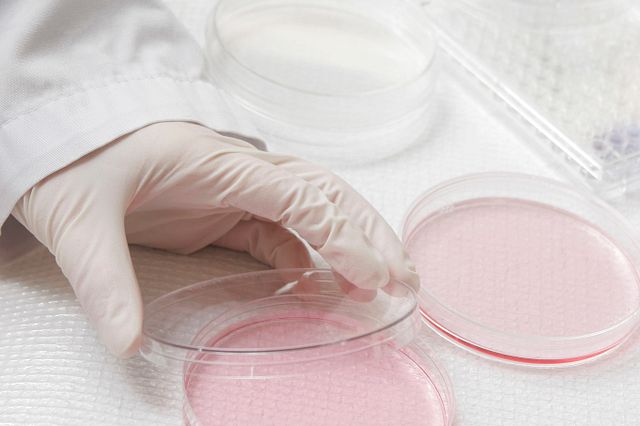ISO 10993-3 Genotoxicity and Carcinogenicity Testing
The ISO 10993-3 test is a critical component of ensuring that medical devices, particularly those made using additive manufacturing (AM) techniques like 3D printing, are safe for human use. This standard evaluates the potential genotoxicity and carcinogenicity risks associated with materials used in these devices. Genotoxicity refers to the ability of a substance to cause damage to genetic material such as DNA, while carcinogenicity pertains to its capability to induce cancer.
In the context of AM testing for biocompatibility, this evaluation is essential because even seemingly harmless materials can pose significant risks when incorporated into medical devices. The ISO 10993-3 test assesses whether a device's components could alter genetic material in ways that might lead to mutations or cancer development.
The process involves several steps including the selection of appropriate specimens, preparation procedures, and analysis methods. Specimens are typically derived from raw materials used in AM processes like powders, resins, or polymers. These samples undergo rigorous scrutiny to determine if they can induce DNA damage when exposed under controlled conditions.
Understanding the broader implications of genotoxicity and carcinogenicity is crucial for product developers who aim to produce safe medical devices. By adhering to this testing protocol early in the design phase, manufacturers can mitigate risks associated with material selection and processing methods used during AM fabrication.
| Step | Description |
|---|---|
| Sample Selection | Identify raw materials or processed components suitable for testing. |
| Preparation Procedures | Ensure samples are prepared according to ISO 10993-3 guidelines. |
| Exposure Conditions | Determine appropriate exposure times and concentrations. |
| Data Analysis | Analyze results for any signs of genotoxic or carcinogenic effects. |
The importance of accurate testing cannot be overstated. Misleading data could result in unsafe products reaching markets, leading to serious health consequences and legal ramifications. Therefore, it is vital that labs conducting these tests follow strict protocols outlined by ISO 10993-3 to ensure reliable outcomes.
Scope and Methodology
The scope of the ISO 10993-3 test covers the evaluation of genotoxicity and carcinogenicity for materials intended for use in medical devices. This includes both finished products and individual components that come into direct contact with human tissues or fluids.
| Scope | Description |
|---|---|
| Materials Evaluation | Determine if materials used in AM processes possess genotoxic or carcinogenic properties. |
| Test Specimens | Select samples representing the full range of materials involved in device manufacture. |
| Exposure Conditions | Define parameters for simulating real-world interactions between test specimens and biological systems. |
| Data Interpretation | Analyze results to draw conclusions about potential risks posed by the evaluated materials. |
The methodology employed involves exposing selected specimens to various agents designed to elicit DNA damage responses. Key factors considered during this phase include duration of exposure, type and concentration of test substances, and any additional variables that may influence outcomes.
Once exposures have been conducted, samples are analyzed using advanced analytical techniques capable of detecting even minute changes in genetic material. Results from these analyses provide insights into whether the tested materials pose genotoxic or carcinogenic risks.
Why Choose This Test
Selecting ISO 10993-3 for genotoxicity and carcinogenicity testing offers numerous advantages that make it an indispensable tool in ensuring the safety of medical devices produced via AM. Here are some key reasons why laboratories should consider this approach:
- Comprehensive Assessment: The test evaluates multiple aspects of material safety, providing a holistic view of potential risks.
- Regulatory Compliance: Adhering to established international standards ensures compliance with regulatory requirements.
- Promotes Innovation: By identifying problematic materials early in the development process, developers can refine their designs for safer products.
- Risk Mitigation: Early detection of genotoxic or carcinogenic properties allows manufacturers to implement corrective measures promptly.
- Enhanced Reputation: Demonstrating commitment to patient safety enhances a company's reputation and builds trust with stakeholders.
- Cost Efficiency: While initial testing costs may seem high, avoiding costly recalls later saves significant expenses.
In conclusion, choosing ISO 10993-3 for genotoxicity and carcinogenicity testing is not just a requirement but also a strategic decision that supports quality assurance efforts while fostering innovation in the medical device industry.
Use Cases and Application Examples
- Bio-Compatible Materials: Ensuring materials used in biocompatible implants are free from genotoxic or carcinogenic elements is paramount. ISO 10993-3 helps verify this crucial aspect.
- Custom Medical Devices: When fabricating custom devices using AM technologies, it's essential to test the components for any potential risks before deployment.
- New Polymer Compositions: Introducing novel polymers into existing product lines requires rigorous testing to guarantee safety. ISO 10993-3 provides a reliable framework for this evaluation.
- Post-Market Surveillance: Even after devices have been approved, continuous monitoring through periodic ISO 10993-3 tests ensures ongoing safety.
In each of these scenarios, the ISO 10993-3 test plays a vital role in safeguarding public health by minimizing exposure to potentially harmful substances.





